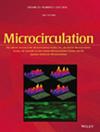Microvascular Consequences of Methemoglobin Compared to Reduced Hemoglobin in the Microcirculation
Abstract
Objectives
The development of hemoglobin-based oxygen carriers (HBOCs) offers a promising alternative to traditional blood transfusions, addressing critical limitations such as the need for cold storage, blood type matching, and a short ex vivo shelf life. HBOCs mimic the oxygen-carrying function of red blood cells without the risk of transfusion-related complications. However, hemoglobin is prone to oxidation when freely circulating in the vasculature, resulting in methemoglobin formation. In this oxidized state, Hb does not transport oxygen, scavenges less nitric oxide, but it is more toxic. As continued research tries to develop effective HBOCs for use in emergency medicine, there needs to be an understanding of the microvascular and toxicological effects of the reduced and oxidized forms of Hb.
Materials and Methods
The study involved Golden Syrian Hamsters instrumented with a dorsal skin window chamber model to observe the acute effects resulting from a hypervolemic infusion (10% of the animal's blood volume) of human Hb [HbFe2+ (hHb)] or methemoglobin [HbFe3+ (met-hHb)] and lactated Ringer's solution as a volume control. Microhemodynamics, mean arterial pressure, heart rate, blood gases, and blood properties were measured.
Results
Mean arterial pressure (MAP) and heart rate (HR) were both altered; animals infused with hHb saw a significant increase in MAP and a decrease in HR, while animals infused with met-hHb saw a significant decrease in MAP and a decrease in HR. Infusion of hHb induced vasoconstriction and hypertension. However, infusion of met-hHb resulted in increased microvascular diameters compared to baseline, but a reduction in functional capillary density compared to baseline, alongside significant increases in inflammation, specifically in systemic and cardiac markers.
Conclusion
This study illuminates the complex impact of Hb oxidation on microvascular function and inflammation, pivotal to understanding the safety and efficacy of HBOC formulations. Future research should focus on strategies to regulate Hb oxidation to enhance therapeutic benefit and minimize detrimental effects in emergency medicine settings.

 求助内容:
求助内容: 应助结果提醒方式:
应助结果提醒方式:


